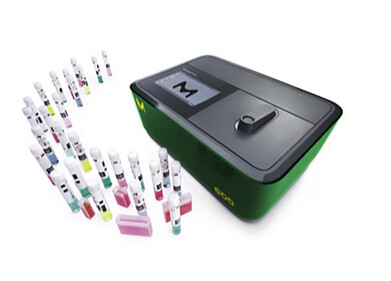Laboratory products
Studying Self-Assembled Polymer/DNA Particles
Jan 14 2010
The Department of Biomedical Engineering, Johns Hopkins University School of Medicine is using the NanoSight LM10-HS system to study self-assembled polymer/DNA particles for drug delivery.
The main research interests of Dr Jordan Green of the Biomaterials and Drug Delivery Laboratory are in cellular engineering and nanobiotechnology. Knowledge of particle size is of particular value in the characterisation of different drug delivery systems. Having had previous experience using dynamic light scattering techniques, Dr Green and his team now also use the complementary technique of nanoparticle tracking analysis from NanoSight. NTA provides insight into their samples particularly those with polydisperse behavior.
The laboratory chose the NanoSight LM10-HS system equipped with an EMCCD high sensitivity camera and a 404nm laser for particle sizing analysis. In a typical study, particle solutions were diluted in DI water to adjust the sample concentration to a level such that there were approximately 30-60 light scattering centers in the visual analysis window. A sixty-second movie containing the Brownian motion tracking of each individual particle was recorded. The movie was processed to enable detection of a least 250 particle tracks per sample. The NTA analysis gives a direct number-averaged distribution of the particle size as well as absolute particle
concentration. The mean, standard deviation and mode of the particles are then calculated.
In this method, each individual particle is independently sized so that a direct number-averaged mean can be calculated. As each particle is counted, a mode, or the peak in the number distribution, can also be calculated. For monodisperse particle populations, both DLS and NTA measured the same values for particle size. However, NTA allowed finer distinction between peaks in samples that were polydisperse. The uniformity of polymeric nanoparticle distribution is thought to be a property of the polymer structure, and in particular, of the polymer terminal group. Changes to polymer terminal group were also found to dramatically change gene delivery efficacy of these nanoparticles in 2-D and 3-D cell systems.
Digital Edition
Lab Asia 31.6 Dec 2024
December 2024
Chromatography Articles - Sustainable chromatography: Embracing software for greener methods Mass Spectrometry & Spectroscopy Articles - Solving industry challenges for phosphorus containi...
View all digital editions
Events
Jan 22 2025 Tokyo, Japan
Jan 22 2025 Birmingham, UK
Jan 25 2025 San Diego, CA, USA
Jan 27 2025 Dubai, UAE
Jan 29 2025 Tokyo, Japan



















